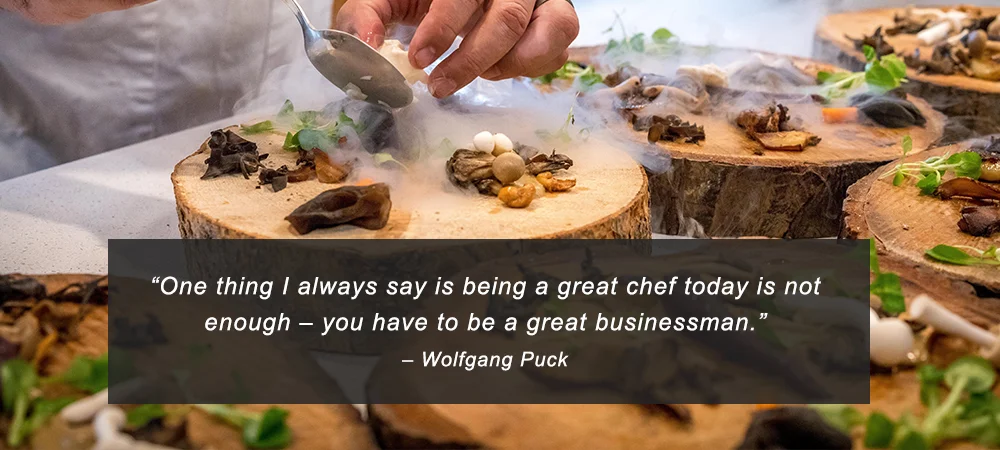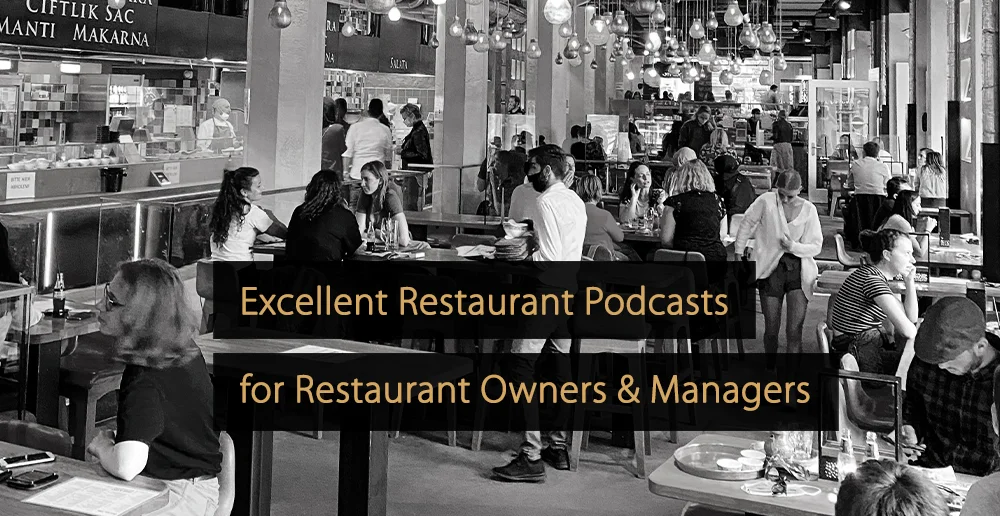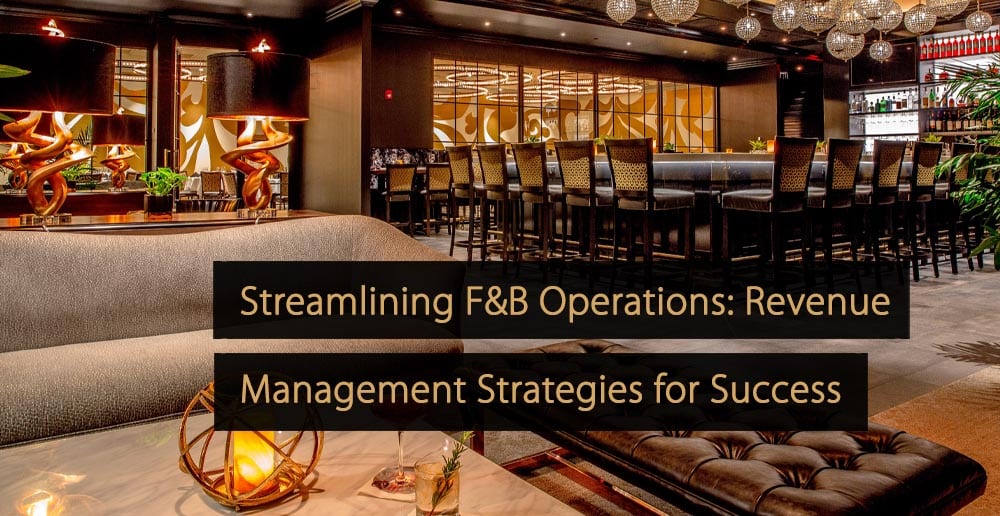The restaurant industry is one of the largest components of the hospitality industry. It is focused on providing food services where customers can order food and eat it on the premises. In this complete guide, you can learn more about the restaurant industry, how it is defined, the different types of restaurants that exist, how the restaurant industry differs from the food service industry, and much more.
Table of Contents:
- What is the Restaurant Industry?
- What is the Difference Between the Restaurant Industry and the Foodservice Industry?
- Types of Restaurants
- The Significance of the Michelin Guide in the Restaurant Industry
- What is the Michelin Guide?
- The Effects of the COVID-19 Pandemic on the Restaurant Industry
- Chatbots in the Restaurant Industry
- POS Systems and Restaurant Industry Trends
- Overview of Management Software in the Restaurant Industry
- Management Systems in the Restaurant Industry: An Overview
- Key Technology Trends in the Restaurant Industry
What Is the Restaurant Industry?
Before exploring the industry in-depth, one of the most important things to establish is precisely what the term ‘restaurant industry’ means. Simply put, this is the term used to describe the part of the service industry focused on providing food services within restaurants, bars, cafés, and similar settings.
Restaurants can take many forms, from standalone restaurants to chain restaurants, fast food restaurants, and more. Essentially, any business that allows customers to enter the premises, order food, and eat that food on the premises can be considered part of the restaurant industry, even if they offer other services.
Businesses within the restaurant industry are major employers within the wider hospitality industry. Some of the positions within businesses of this kind include waiters, chefs, bartenders, customer service staff, and restaurant managers. Restaurants are usually considered to form one part of the food service industry.
According to the Food Service Market Report by IMARC Group, the market size of the food service and restaurant industry is expected to grow to $4 billion by the year 2032.
What Is the Difference Between the Restaurant Industry and the Food Service Industry?
Although the two terms are sometimes used interchangeably, the restaurant and food service industries have different definitions, and there are notable distinctions between them. The most significant difference is that the restaurant industry refers to businesses that provide customers with a ‘dine-in’ experience.
By contrast, the food service industry has a broader definition and includes any and all businesses involved with food service, regardless of whether customers are permitted to eat on-site. Restaurants form one part of this, but so too do catering businesses, food retail businesses, dedicated takeaway establishments, and more.
Table: Differences Between Restaurant Industry, Food Services Industry & Hospitality Industry
Types of Restaurants
While the restaurant industry has quite a specific definition, it is worth remembering that there are still many different types of businesses that fall under the wider restaurant industry umbrella, including all of those below:
Fine Dining Restaurant
Fine dining within the restaurant industry describes restaurants that provide high-end service, which includes quality food, sophisticated presentation, a level of formality to the experience, and highly skilled staff. The ingredients used will be top of the range, and the chefs working in fine dining restaurants include some of the most acclaimed in the industry. Employees are highly trained and are expected to be knowledgeable about the menu, while prices are high.
Video: What Is a Fine Dining Restaurant?
Casual Dining Restaurant
Casual dining is the section of the restaurant industry that provides a more relaxed setting for customers to enjoy their meals. This means the level of formality is toned down when compared to fine dining restaurants, although table service is likely to still be in place. Compared to fine dining restaurants, casual dining environments are more affordable, although the quality of food will not be as high.
Contemporary Casual Restaurant
Contemporary casual restaurants are similar to casual dining restaurants. Still, they emphasize aesthetics more to appeal to modern customers who may wish to take photographs of their meals and their dining experience for social media. Many contemporary casual restaurants also have a niche appeal within the restaurant industry, and there may be a focus on sustainability, obscure food, modernity, and appealing to younger customers.
Fast Casual Restaurant
Fast-casual restaurants operate in the space between fast-food restaurants and casual dining restaurants. A greater emphasis is placed on the speed of service, and most restaurants in this category will take orders from a counter rather than providing full table service. Compared to the fast-food sector of the restaurant industry, prices tend to be higher, along with the quality of food, although menus may be more limited or focused.
Family Style Restaurant
Some businesses operating in the restaurant industry can be described as family-style restaurants. These can be formal or casual, although casual is more common, and an emphasis is placed on food served on platters, with customers sharing the food ordered and putting it on their own plates. Additionally, the atmosphere will be family-focused, and alcohol options will likely be more limited than fine dining and casual restaurants.
Video: What is Family-Style Dining?
Fast Food Restaurant
Fast food restaurants are focused on speed and convenience. While dining in is an option, most fast-food restaurants also provide a fast takeaway service, and many will provide drive-through service. The food is low-cost, and the ingredients’ quality is likely lower than most other restaurant types. Many of these businesses in the restaurant industry function as chains or franchises with multiple locations nationally or even globally.
Café
A café is a small business within the restaurant industry that provides relatively cheap, simple foods, including home-cooked meals, light snacks, baked goods, cakes, and other similar items. While most restaurants emphasize the food, a café will usually place a greater emphasis on the provision of beverages, including tea and coffee. The atmosphere is relaxed, and cafés may be stylized as coffee shops, houses, or tea rooms.
Buffet Restaurant
A buffet restaurant is a restaurant that operates by placing food in a public space, with customers serving themselves and taking their food back to their tables. Buffets within the restaurant industry often focus on a particular type of cuisine, although some provide diverse options. It is common for buffets to operate based on an ‘all you can eat’ premise, with customers paying a flat fee regardless of how much they consume.
Food Trucks and Food Stands
Food trucks and food stands are among the most informal options within the restaurant industry. These businesses operate a simple stand or food truck, where food is prepared and given to paying customers. The food options will usually be very limited and may even focus on one food item only, such as hot dogs, burgers, or pizzas. For a business of this kind to be classed as a restaurant, options to sit and eat the food nearby should be provided.
Pop-Up Restaurant
Pop-up restaurants are temporary restaurants that can take many different forms. A pop-up restaurant could, for instance, be a temporary stand operated by professional chefs or a full sit-down restaurant that only remains operational for a short period of time. Within the restaurant industry, pop-up restaurants may be used to build hype or gauge interest, capitalize on a nearby event, or test the viability of a restaurant concept.
Ghost/Virtual Restaurant
A ghost or virtual restaurant is a relatively new concept that challenges the established definition of the restaurant industry. Essentially, it refers to a food service business operating takeaway or delivery services only and functioning as its own entity while utilizing the kitchen and infrastructure of an existing restaurant. This concept became much more popular due to the COVID-19 pandemic.
The Significance of the Michelin Guide in the Restaurant Industry
Within the restaurant industry, the Michelin Guide is the most respected guide on restaurant quality, allocating star ratings to indicate the quality of a restaurant. You can learn more about the significance below.
What is the Michelin Guide?
The Michelin Guide, also known as the Red Michelin Guide, is a guidebook produced by the French tire company Michelin. It was originally intended to provide drivers with information about the best restaurants to stop at. The Michelin Guide utilizes a star rating system, allocating up to three stars to the best food establishments.
Only the absolute best restaurants achieve three-star status, with examples including Restaurant Gordon Ramsey in London, England, and Eleven Madison Park in New York City, USA. The Michelin Guide is so widely respected within the industry and by customers that many restaurants and head chefs strive to achieve Michelin stars.
What Are the Types of Michelin Guide Categories?
The Michelin Guide briefly summarizes each restaurant, while symbols indicate different rating categories. These various categories help to highlight restaurants with different qualities or that excel in particular areas. The categories and symbols used in the guide are outlined below:
Michelin Stars
Michelin Stars are the main rating system used by the Michelin Guide and the most sought-after rating category too. Restaurants are graded from zero to three stars, with three-star-rated restaurants being the best. The ratings are based on the quality of cooking, ingredients, consistency, and value. The Michelin Star system is so well respected that restaurants moving from three stars to two stars, or from two stars to one star, can dramatically affect popularity. However, achieving even a one-star rating is regarded as a great achievement.
The rating system is defined as follows:
1 star: “A very good restaurant in its category”
2 stars: “Excellent cooking, worth a detour”
3 stars: “Exceptional cuisine, worth a special journey”
Green Stars
Green Stars are a new category, having launched in the 2020 guidebook. The Michelin Guide uses Green Stars to highlight those in the restaurant industry who have achieved excellence in sustainability.
Bib Gourmand
The Bib Gourmand feature within the Michelin Guide dates back to the 1950s. It highlights companies in the restaurant industry that offer exceptional food at moderate or affordable prices.
The Michelin Plate
The Michelin Plate is another relatively recent addition to Michelin Guides. It is used to denote restaurants where inspectors have discovered high-quality food without the additional steps required to earn Michelin Stars.
The Effects of the COVID-19 Pandemic on the Restaurant Industry
The COVID-19 pandemic took a serious toll on most industries, but the restaurant industry was hit especially hard, as restrictions on social gatherings made it impossible to continue business as usual. To survive, many businesses focused on off-premises services, such as takeaway and collection services and ghost restaurants.
Customers have returned as the world has emerged from the worst of the pandemic, but some practices adopted during the crisis will likely remain in place. Many restaurants will continue to provide on-site and off-site services, take contingency measures, and explore new ways of working.
Beyond this, the pandemic increased customers’ awareness of hygiene issues, which means restaurants are likely to continue to up their efforts in this area. Additionally, many hotels and restaurants are forming partnerships so that vulnerable or more risk-averse travelers can continue to enjoy quality meals.
Chatbots in the Restaurant Industry
Many restaurant businesses rely on chatbots powered by artificial intelligence to provide online customer service. Using chatbots, common questions can be answered, data can be gathered, and the chatbot can provide almost instant responses on a 24/7 basis.
To learn more about what chatbots are, how they are being used in the restaurant industry, and the benefits they can provide, read the “Restaurant Chatbots: What Are They, Their Use and Benefits” article.
POS Systems and Restaurant Industry Trends
Point-of-sale systems, or POS systems, are one of the most important technological investments those in the restaurant industry can make. However, to get more from a POS system than the core function of processing payments, it is important to consider how this technology is being deployed and why.
You can learn more about the current and emerging trends of using point-of-sale systems within restaurants by reading the article “Restaurant POS Systems: The Latest and Future Trends”.
Overview of Management Software in the Restaurant Industry
Businesses operating in the restaurant industry use many different software solutions to optimize processes, boost efficiency, enhance the customer experience, and improve accuracy. Within this, several software solutions are intended to assist restaurant management activities.
To explore this software further and gain a deeper appreciation for how software solutions can assist restaurant managers, read the “Restaurant Management Software: A Complete Overview” article.
Management Systems in the Restaurant Industry: An Overview
Restaurant management systems are specifically designed to assist users in the day-to-day management of businesses in the restaurant industry. Examples of some of these tools include point-of-sale systems, order management systems, and customer relationship management systems, and all-in-one packages are available.
For an overview of how restaurant management systems work, the key elements or components included, and information on the main features to look for, read “Restaurant Management Systems: Overview, Key Aspects and Features”.
Key Technology Trends in the Restaurant Industry
Finally, the restaurant industry has become increasingly reliant on technology, and the best businesses will utilize diverse tools. Technology can serve many purposes, including making work easier for restaurant staff, improving customer experience, and providing restaurants with greater reach. According to the State of the Restaurant Industry Research Report by Bank of America, restaurants now spend an average of 7% to 10% of their gross revenue on IT.
To explore the topic of technology within the restaurant industry further and to read about the most significant emerging trends, take a look at the “Latest Restaurant Technology Trends You Need to Know About” article.
Restaurant Industry FAQs
The restaurant industry includes a wide range of businesses, from high-end fine dining restaurants to more casual restaurants, such as fast-food restaurants. Regardless of the type, however, those operating in the restaurant industry must always try to balance quality, value for money, and the customer experience provided.
Want to Learn More About Related Industries?
The hospitality industry is part of the travel industry, and the hotel industry is part of the hospitality industry. All these industries have in common that they are large service industries worldwide and increasingly important in the modern age. But what is the difference between the travel and tourism industry? And what are all hospitality sectors within the hospitality industry? In the following articles, you learn more about related industries.
- Travel Industry; An Overview of One of the Largest Service Industries
- Hotel Industry; An Overview of All Different Types of Accommodations
- Hospitality Industry: The No.1 Hospitality Information Guide
- Tourism Industry; Everything You Need to Know About Tourism
- What is the Difference Between the Travel and Tourism Industry?
- Airline Industry: All You Need to Know About The Airline Sector
- Aviation Industry: Everything You Need to Know About the Aviation Sector
- Everything You Need to Know About the Cruise Industry
- Space Tourism: Space Companies That Will Make You An Astronaut
More Tips to Grow Your Business
Revfine.com is the leading knowledge platform for the hospitality and travel industry. Professionals use our insights, strategies, and actionable tips to get inspired, optimize revenue, innovate processes, and improve customer experience.Explore expert advice on management, marketing, revenue management, operations, software, and technology in our dedicated Hotel, Hospitality, and Travel & Tourism categories.
This article is written by:
Hi, I am Martijn Barten, founder of Revfine.com. With 20 years of experience in the hospitality industry, I specialize in optimizing revenue by combining revenue management with marketing strategies. I have successfully developed, implemented, and managed revenue management and marketing strategies for individual properties and multi-property portfolios.










Leave A Comment